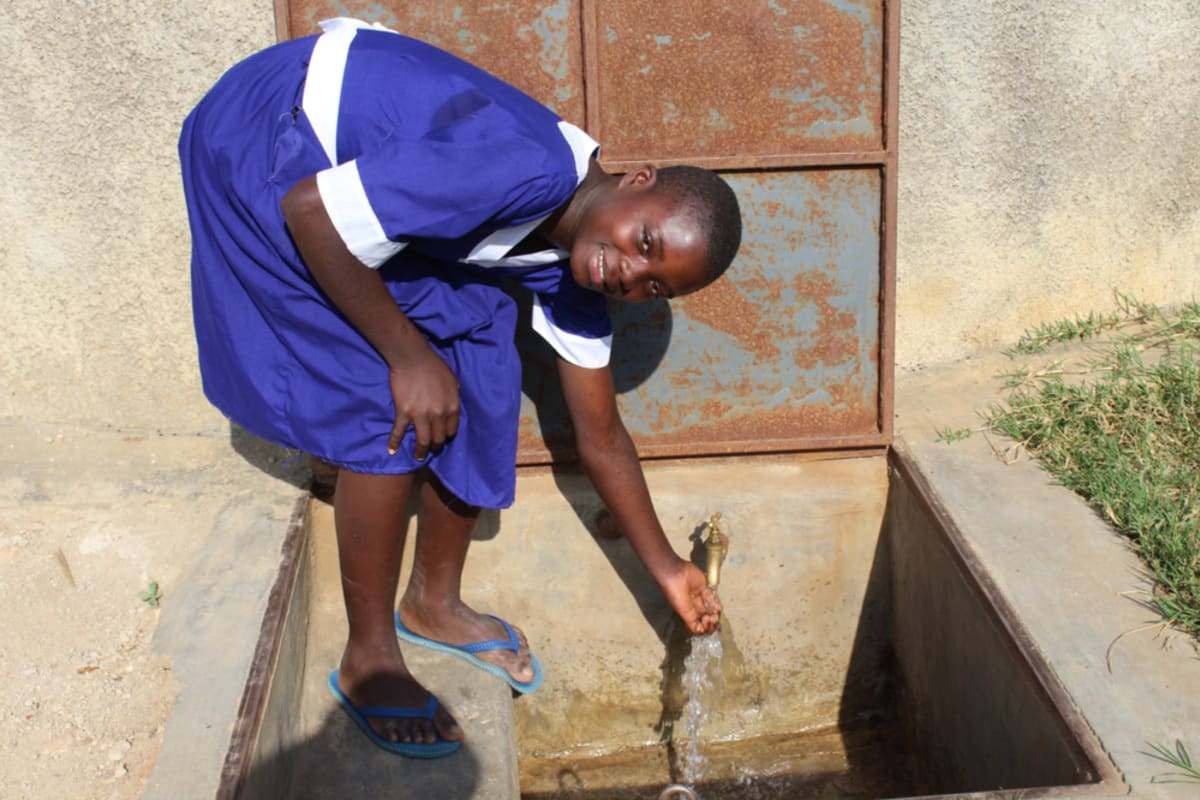Musango Primary School was started in the year 1972 with just 62 pupils on a four acres of land donated by community member Andrea Okumu. The first headteacher was Mr. Williams Masini. The school grew gradually at first but now boasts of 603 pupils.
There is no water at school. The lack of water is severely cutting into students’ class schedule and learning opportunities. Since they need water for drinking, cleaning, washing up, and cooking school lunch, students must find water throughout the day.
The students have found water 800 meters away at a spring in the community. It is located at the edge of the farm, and the students must sidle through an overgrown path to get there. The spring is normally overcrowded, especially in the mornings and evenings when the villagers are also fetching water. It takes around two minutes to fill a 20-liter jerrycan, so the students spend a lot of time at the spring filling their containers.
The pupils of Musango Primary School experience frequent coughs and stomach complications due to drinking contaminated water, since the handling of water is so poor. Too much time previously meant for class and studies is wasted at the spring.
"Lack of clean water in school has caused us many problems, the major one being our children fall sick often. They are forced to miss classes when they fall sick," said Deputy Headteacher Maloba.
"Also, they waste so much time outside when they are sent to fetch water. Some go playing and do not come back for their lessons. As teachers, we also suffer since we depend on this pupils to fetch our drinking water."
Musango Primary School has a large population that is really in need of water. The availability of water in school would ease the pupils’ burdens of carrying water from the spring every morning and during the day. Some pupils do not find anything at home when they’re released for lunch and come back to school weak and hungry. When a teacher instructs them to fetch water from the spring when they come from lunch, many feel insulted and never come back for lessons.
What we can do:
Training
"Hygiene in our school is not up to standards. Our pupils do not wash their hands after visiting the latrine. They even find it difficult to wash the latrines due to lack of water. The classrooms are not spared either," admitted Teacher Ngosia Odder.
Training on good hygiene habits will be held for two days. The facilitator will use PHAST (participatory hygiene and sanitation transformation), ABCD (asset-based community development), CTC (child to child), lectures, group discussions, and handouts to teach health topics and ways to promote good practices within the school. The CTC method will prepare students to lead other students into healthy habits, as well as kickstart a CTC club for the school.
Handwashing Stations
This CTC club will oversee the new facilities, such as handwashing stations, and make sure they are kept clean and in working condition. The two handwashing stations will be delivered to the school, and the club will fill them with water on a daily basis and make sure there is always a cleaning agent such as soap or ash.
VIP Latrines
Two triple-door latrines will be constructed with local materials that the school will help gather. Three doors will serve the girls while the other three serve the boys. And with a new source of water on school grounds, students and staff should have enough to keep these new latrines clean.
Rainwater Catchment Tank
A 50,000-liter rainwater catchment tank will help alleviate the water crisis at this school. The school will also help gather the needed materials such as sand, rocks, and water from the spring for mixing cement. Once finished, this tank can begin catching rainfall that will be used by the school’s students and staff.
We and the school strongly believe that with this assistance, standards will significantly improve. These higher standards will translate to better academic performance!

 Rainwater Catchment
Rainwater Catchment
 Rehabilitation Project
Rehabilitation Project



































